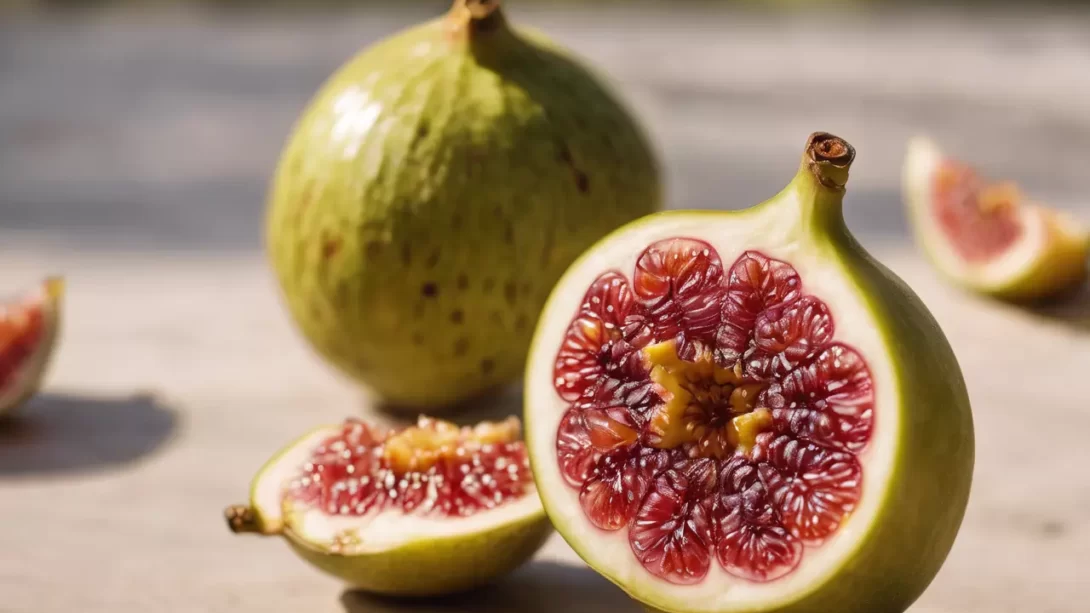Figs, known botanically as Ficus carica, are not just celebrated for their sweet taste but also for their captivating fragrance. These fruits have been valued throughout history, not only for their culinary uses but also for their sensory appeal. The aroma of a fig is as complex and delightful as its flavor, playing a significant role in the fruit’s allure.
The Aroma Profile of Figs
Figs possess a unique and appealing scent that is often described as a blend of sweet, warm, and earthy notes. This aroma is subtle yet distinctive, setting it apart from other fruits.
- Sweetness: The first and most prominent note in the scent of a fig is its sweetness. This is reminiscent of ripe fruit, conveying a sense of lushness and richness.
- Warmth: Accompanying the sweetness is a warm undertone. This aspect of the fig’s scent is often likened to honey or caramel, adding depth and complexity to its overall fragrance.
- Woody and Earthy Notes: The scent of a fig also includes subtle woody and earthy notes. These provide a grounding effect and are reminiscent of the tree’s bark and leaves where the fruit grows.
The combination of these scents makes figs not only enjoyable to eat but also to smell. The fragrance is both inviting and comforting, enhancing the overall experience of the fruit.
Variations in Fig Fragrance
The scent of a fig can vary depending on several factors:
- Different Varieties: There are numerous varieties of figs, each with its unique scent profile. For example, some figs might have a more pronounced honey-like aroma, while others might lean towards a fresher, greener scent.
- Ripeness: The stage of ripeness greatly affects a fig’s aroma. Unripe figs have a more subdued scent, while fully ripe figs emit a stronger, sweeter, and more complex fragrance.
Comparison with Other Fruits
The scent of figs is distinctive and can be interestingly contrasted with other common fruits to appreciate its uniqueness.
- Richness and Depth: Unlike the sharp acidity or zesty aroma of citrus fruits, figs offer a richer, deeper olfactory experience. Their scent is more akin to the full-bodied sweetness found in fruits like dates or ripe plums.
- Subtlety and Complexity: While some fruits have a straightforward, easily identifiable scent, figs present a more layered aromatic profile. This complexity sets them apart from fruits with more singular scent notes, like apples or grapes.
This comparative analysis helps to place figs in the broader context of fruit aromas, highlighting their unique place in the fruit world.
The Role of Scent in Fig Attraction
The fragrance of figs isn’t just appealing to humans; it plays a crucial role in the plant’s ecological interactions, especially in attracting pollinators.
- Pollinator Attraction: Figs rely on specific wasps for pollination, and their scent is a key factor in attracting these insects. The unique aroma of the fig, especially when ripe, is designed to lure the right pollinators necessary for its reproduction.
- Ecological Significance: This scent-based attraction is an important part of the fig tree’s life cycle and contributes to the ecological balance in environments where figs grow. It underscores the role of scent in the survival and propagation of plant species.
Understanding the ecological role of fig scent adds another layer of appreciation for this fruit and highlights the intricate connections within natural ecosystems.
Fig Scent in Culinary Uses
In the culinary world, the fragrance of figs is a prized attribute that enhances their appeal in various dishes.
- Enhancing Flavor Profiles: The unique aroma of figs can elevate the sensory experience of a dish. It pairs well with both sweet and savory ingredients, adding depth and complexity to the overall flavor.
- Culinary Examples: In desserts, the sweet and warm notes of figs complement spices like cinnamon and nutmeg. In savory dishes, their earthy undertones can balance the richness of meats or the sharpness of cheeses.
The scent of figs plays a vital role in their culinary versatility, making them a favorite ingredient among chefs and food enthusiasts. Whether in fresh, dried, or preserved form, the aroma of figs is an integral part of their allure and enjoyment.
Conclusion
The fig, with its complex and inviting aroma, stands out as a fruit of both culinary and sensory delight. Its fragrance, characterized by a blend of sweet, warm, and earthy notes, makes it unique among fruits. This distinct scent not only enhances the eating experience but also plays a vital role in the fig’s ecological interactions.




